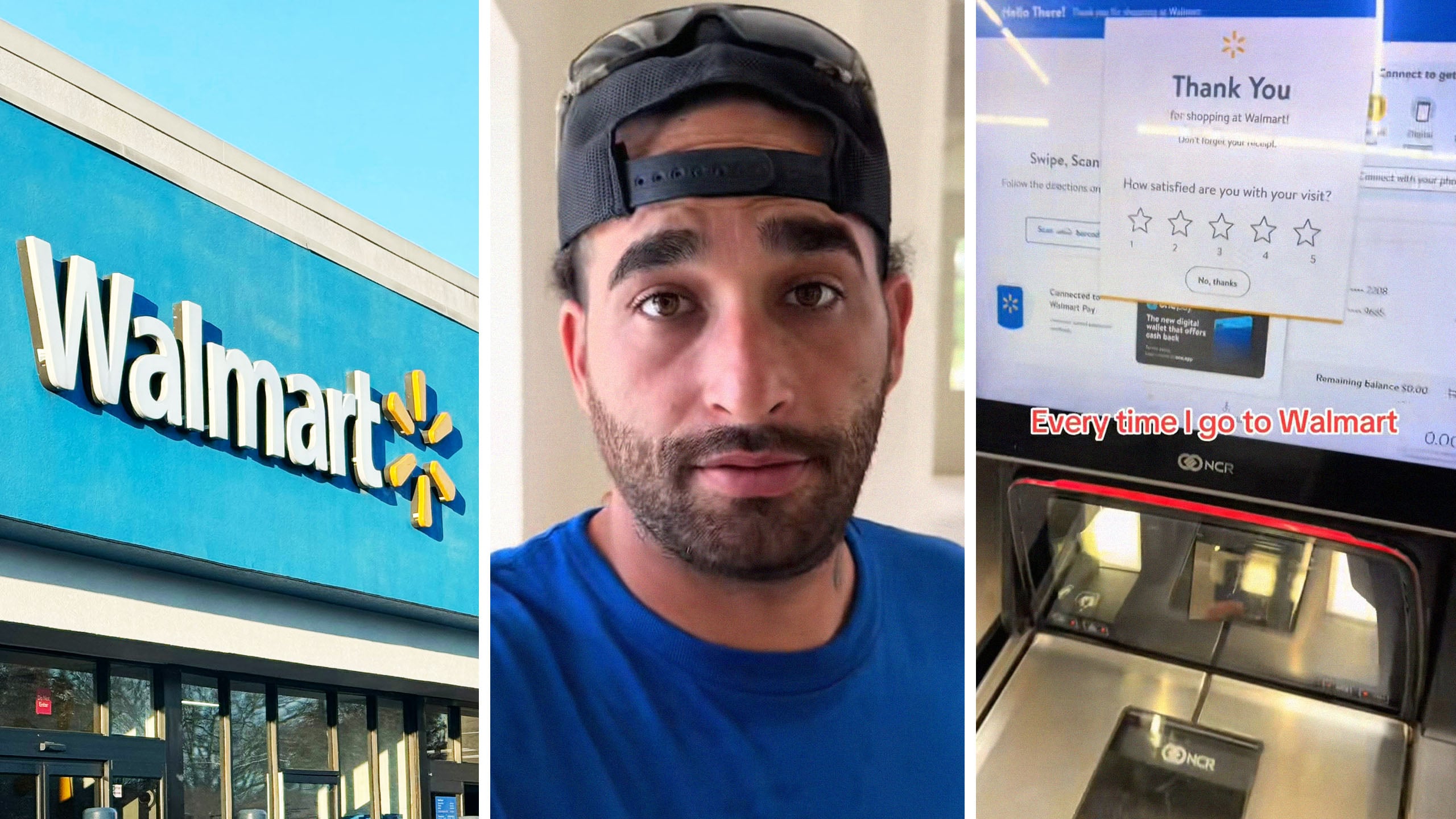
A shopper at Walmart checkout taps one star on the customer feedback screen—something they say they “always do.” It’s petty, relatable, and strategic, according to thousands of commenters.
The clip from Florida-based creator @killintimecastinlin has been viewed more than 1.3 million times. It has also received considerable attention due to the potential impacts he and other one-star diehards can have on Walmart workers’ job security.
Who gets hurt by a 1-star at Walmart? Depends on who you ask
What started as a petty act of protest quickly spiraled into a full-blown debate in the TikTok comments section. And as it turns out, the most intense arguments weren’t about any faulty card readers or the lack of Apple Pay. It was about who’s punished when customers rate their experience poorly.
“I always hit 1 star,” one commenter said, “because management deserves it.” Another chimed in, “It destroys our metrics and lessens the bosses’ bosses’ bonuses.”
That sentiment, clearly cathartic for many shoppers, reflects a growing desire to hold big corporations accountable for tech issues and understaffing, rather than blaming front-line workers for simply trying to get through their shift.
As the thread grew, so did the confusion. A self-identified Walmart employee pushed back.
“It also affects the employee. We’re held to the same metric standards as managers,” they said.
Another claimed only managers and up receive performance bonuses, while someone else confidently countered: “My fiancé and mom are both team leads and both got $6,000 bonuses in March. I would know—I spent the money.”
More than just gossip
This is more than just workplace gossip. It’s a reflection of how opaque performance-based pay systems can fracture solidarity between workers and customers. Walmart’s internal compensation structures aren’t publicly disclosed in detail. Still, past reporting indicates that store-level bonuses are tied to metrics such as sales, shrinkage (theft), and customer satisfaction scores, with different criteria applying at various levels of seniority.
That confusion is no accident. In large retail operations, such as Walmart, bonus eligibility and performance incentives are often determined by proprietary algorithms and shifting goalposts that vary across locations and quarters. Workers on the same team may be judged by different criteria. Or not even know whether they’re eligible for bonuses at all.
When a customer taps one star in frustration, thinking they’re sticking it to corporate, it’s not always clear if they’re accidentally undercutting the self-checkout worker instead.
Tech annoyance meets corporate control
It’s not just the star ratings making people mad. A clear pattern emerges in the comments: Walmart’s checkout technology appears to be frustrating by design. Chip readers glitch. App-based payments crash. And customers are left fumbling through a multi-step gauntlet of insert-swipe-pray.
At the center of the outrage? Walmart’s refusal to enable tap-to-pay, despite their card readers already supporting it. According to payments industry experts, the company’s Verifone payment terminals are NFC-enabled. This means they’re physically capable of accepting contactless payments, such as Apple Pay or Google Pay. However, Walmart has intentionally disabled that functionality across most stores, opting instead to promote its own proprietary system, Walmart Pay, which requires scanning a QR code using the Walmart app.
The result? A checkout process that feels needlessly clunky in 2025, especially compared to competitors like Target, Costco, or your local coffee shop, all of which routinely offer tap-to-pay. Many customers now expect that checkout will be fast, contactless, and frictionless. Walmart falls short of that standard in ways that feel increasingly deliberate.
It’s nothing new
Walmart’s resistance to contactless payments dates back years. The company was a founding member of MCX (Merchant Customer Exchange), a consortium of retailers that sought to avoid paying Apple Pay’s transaction fees by launching their mobile payment systems. Even after MCX collapsed, Walmart continued to use its in-house solution. To this day, the company has not enabled Apple Pay or other NFC options in most stores.
For shoppers, that creates a bizarre mismatch. The largest retailer in the United States offers a checkout experience that feels technologically outdated. It’s not a hardware issue. It’s a business decision, and one that places the burden of corporate strategy squarely on the backs of customers trying to get through self-checkout with a working card reader.
@killintimecastinline Along with not showing my receipt when exiting ##fyp##florida##outdoorsman##bluecollar##construction##trending##funny##walmart ♬ Day 'N' Nite (nightmare) – Kid Cudi
The Mary Sue reached out to Walmart by web submission form and to the creator via direct message.
Have a tip we should know? [email protected]







